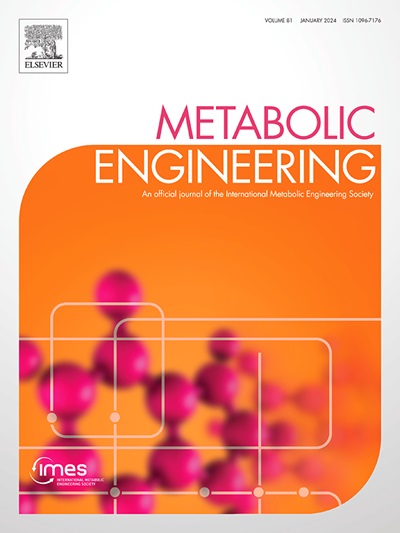Rhodotorula sp. as a promising host for microbial cell factories
IF 6.8
1区 生物学
Q1 BIOTECHNOLOGY & APPLIED MICROBIOLOGY
引用次数: 0
Abstract
Rhodotorula sp. is a red yeast that has emerged as a promising host for microbial cell factories. Under specific conditions, Rhodotorula sp. can accumulate lipids that constitute over 70% of its dry cell weight, underscoring its potential in lipid compound production. Additionally, it can utilize a variety of carbon sources, including glucose, xylose, and volatile fatty acids, and exhibits high tolerance to low-cost carbon sources and industrial by-products, showcasing its excellent performance in industrial processes. Furthermore, the native mevalonate pathway of Rhodotorula sp. enables its efficient synthesis of antioxidant carotenoids and other terpenoids, which are widely applied in the food, pharmaceutical, and cosmetic industries. Due to its excellent accumulation ability of lipophilic compounds, metabolic diversity, and environmental adaptability, this review summarizes recent advances in genetic elements and metabolic engineering technologies for Rhodotorula sp., emphasizing its potential as a chassis cell factory for the production of lipids, carotenoids, and other chemicals. It also highlights key factors influencing commercial fermentation processes and concludes with challenges and solutions for further developing Rhodotorula sp. as microbial chassis.
红酵母是微生物细胞工厂的理想宿主。
红酵母是一种红色酵母菌,已成为微生物细胞工厂的有前途的宿主。在特定条件下,Rhodotorula sp.可以积累占其干细胞重量70%以上的脂质,强调其在脂质化合物生产方面的潜力。此外,它可以利用多种碳源,包括葡萄糖、木糖和挥发性脂肪酸,并对低成本碳源和工业副产品具有很高的耐受性,在工业过程中表现出优异的性能。此外,Rhodotorula sp.的天然甲羟戊酸途径使其能够高效合成抗氧化类胡萝卜素和其他萜类化合物,广泛应用于食品,制药和化妆品行业。由于红霉菌具有良好的亲脂性化合物积累能力、代谢多样性和环境适应性,本文综述了其遗传元件和代谢工程技术的最新进展,强调了其作为生产脂类、类胡萝卜素和其他化学物质的底盘细胞工厂的潜力。本文还强调了影响商业发酵过程的关键因素,并总结了进一步开发红酵母作为微生物底盘的挑战和解决方案。
本文章由计算机程序翻译,如有差异,请以英文原文为准。
求助全文
约1分钟内获得全文
求助全文
来源期刊

Metabolic engineering
工程技术-生物工程与应用微生物
CiteScore
15.60
自引率
6.00%
发文量
140
审稿时长
44 days
期刊介绍:
Metabolic Engineering (MBE) is a journal that focuses on publishing original research papers on the directed modulation of metabolic pathways for metabolite overproduction or the enhancement of cellular properties. It welcomes papers that describe the engineering of native pathways and the synthesis of heterologous pathways to convert microorganisms into microbial cell factories. The journal covers experimental, computational, and modeling approaches for understanding metabolic pathways and manipulating them through genetic, media, or environmental means. Effective exploration of metabolic pathways necessitates the use of molecular biology and biochemistry methods, as well as engineering techniques for modeling and data analysis. MBE serves as a platform for interdisciplinary research in fields such as biochemistry, molecular biology, applied microbiology, cellular physiology, cellular nutrition in health and disease, and biochemical engineering. The journal publishes various types of papers, including original research papers and review papers. It is indexed and abstracted in databases such as Scopus, Embase, EMBiology, Current Contents - Life Sciences and Clinical Medicine, Science Citation Index, PubMed/Medline, CAS and Biotechnology Citation Index.
 求助内容:
求助内容: 应助结果提醒方式:
应助结果提醒方式:


